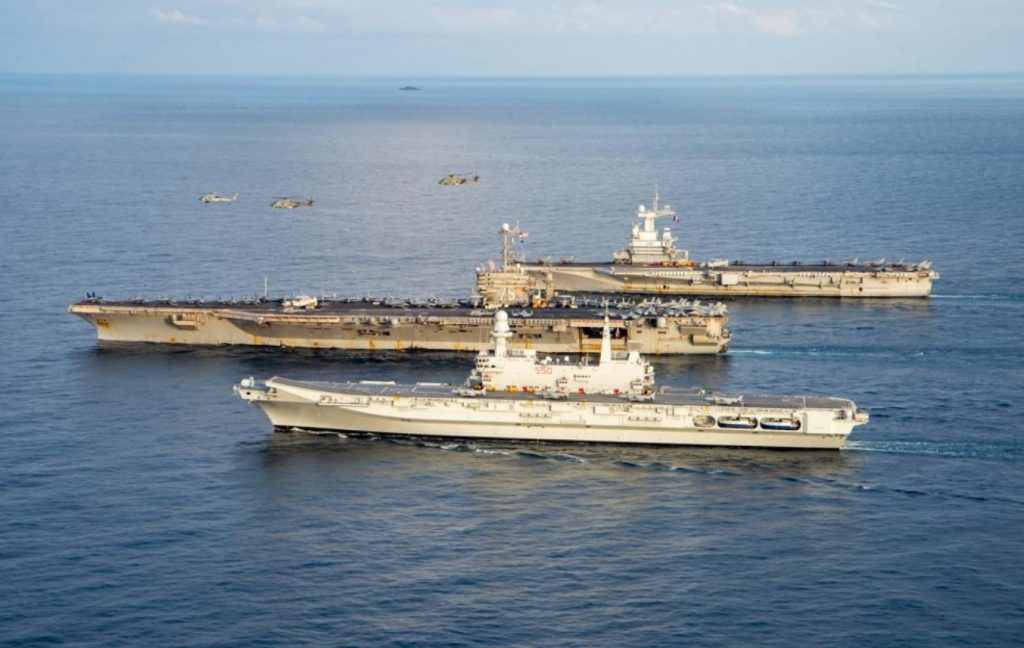Aircraft carriers from the naval forces of France, Italy and the US conducted tri-carrier operations in the Ionian Sea in support of NATO security operations on March 17.
The US Navy’s Harry S. Truman Carrier Strike Group (HSTCSG) integrated with the French carrier FS Charles de Gaulle’s (R 91) Task Force 473 and Italian carrier ITS Cavour (C-550) to further enhance interoperability.
“We are plugged in very closely with our NATO partners who bring tremendous capacity in ships and aircraft. The interoperability we build by doing these exercises ensures maximum capability of our combined maritime forces,” said Rear Adm. Curt Renshaw, commander, Carrier Strike Group 8.
The convergence of three allied aircraft carrier strike groups allowed for the ability to conduct a series of tactical missions designed to maximize air defense capabilities and extended the reach of long range precision maritime strikes from carrier-based aircraft in a rapidly evolving area of operations.
This is not the first time three NATO carriers are jointly operating in the region. In February, the same trio sailed in the Mediterranean Sea during Neptune Strike 22, an exercise that saw the US carrier strike group put under NATO command and control, highlighting the natural evolution of NATO’s ability to integrate the high-end maritime warfare capabilities of a carrier strike group to support the defense of the alliance.
“The capabilities of a US aircraft carrier strike group are made exponentially stronger by operating alongside our allies and partners. Adding the French and Italian carrier teams provides an exciting chance to demonstrate that the whole is truly greater than the sum of its parts,” said Renshaw.
“The Cavour is a part of broader activities aimed at increasing our ability to operate within the alliance,” said Italian Navy POC. Leveraging every possible interaction to improve the level of interoperability on the NATO forces is crucial to international security and stability.”

The current deployment of the Charles de Gaulle CSG, named Clemenceau 22, contributes to the defense of the eastern flank of the alliance and brings together a variety of allied resources, including the Arleigh Burke-class guided missile destroyer USS Ross (DDG 71).
“Operating alongside our NATO allies is a primary objective of our Clemenceau 22 deployment,” said French Rear Adm. Christophe Cluzel, commander, Task Force 473. “Events like this enhance our interoperability to operate together and strengthen the exchanges with our NATO partners, essential to European security in this strategic area.”
Elements of the US carrier strike group include the flagship, USS Harry S. Truman, destroyers USS Gonzalez (DDG 66), USS Bainbridge (DDG 96), USS Gravely (DDG 107), the Royal Norwegian Navy’s Fridtjof-Nansen class frigate HNoMS Fridtjof Nansen (F310), and the Ticonderoga-class cruiser USS San Jacinto (CG 56).
USS Cole (DDG 67) and USS Jason Dunham (DDG 109) are also part of the carrier strike group and currently supporting US Fifth Fleet area of operations.
The Harry S. Truman CSG is on a scheduled deployment in the US Sixth Fleet area of operations after getting underway from Mayport in December last year.



























